How Long Should Term Life Insurance Last?

What are my term insurance options?
There’s no rule that says you can only own one individual life insurance policy. Owning more than one policy, each with different term lengths is called laddering, or layering.
In fact, if you have multiple goals you wish to cover with term life insurance, it may be more budget-friendly to buy more than one.
» Learn more: Laddering Multiple Life Insurance Policies
For example, say your largest debt is your mortgage. The loan balance is for $250,000 and it’s a 15-year term. Taking this into consideration, you probably only need a 15-year term policy, right?
Well, let’s also say you have three children ages nine months, two years, and three years. You and your spouse plan on paying for their college tuition. Your youngest won’t graduate college for at least 21 years.
So, let’s think about this. You know you want protection of at least $250,000 for 15 years (the mortgage). And according to the Education Data Initiative, the average cost of a public four-year in-state college in the U.S. is $35,331 per student per year (including tuition, books, supplies, and daily living expenses).
Sending three children to college to obtain their bachelor’s degrees will cost approximately $450,000 total. You’ll want this amount of protection for at least 20 years since your youngest is less than one.
You could purchase one policy with a coverage amount of $700,000 and term length of 25 years OR you could purchase two policies—one with a coverage amount of $250,000 and term length of 15 years and a second one with a coverage amount of $450,000 and term length of 25 years.
Consider the screenshots below. They are quotes for a 40-year-old male.
Option 1: One Policy – $700,000 Life Insurance Policy with a 25-Year Term
Option 2: Laddering Two Policies – $250,000 Life Insurance Policy with a 15-Year Term and $450,000 Life Insurance Policy with a 25-Year Term
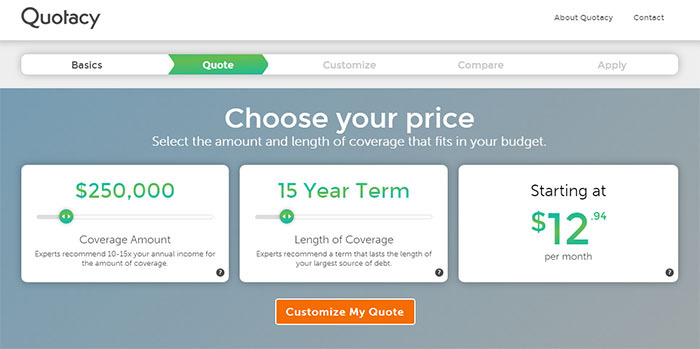
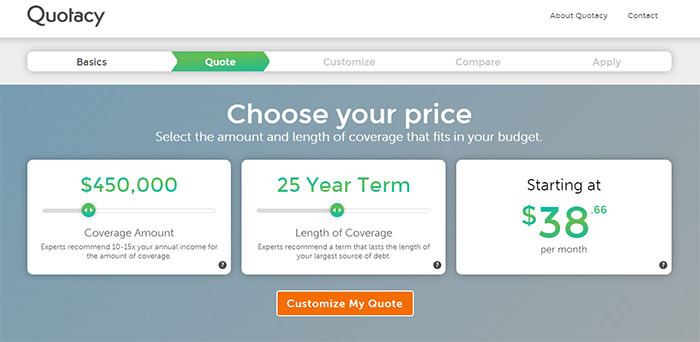
As you can see from the screenshots, laddering the two policies would save you a few dollars each month. And after 15 years, you really save money each month.
Option 1: Pay $55.81 per month for 25 years.
Option 2: Pay $51.60 per month for 15 years, then $38.66 per month for remaining 10 years.
If you went with Option 2 to ladder the policies, after 15 years, the first policy would expire and you would no longer be paying for coverage you don’t need since your mortgage is now paid off. But you would still have the back up 25-year term policy to financially protect your family for another 10 years.
How much term insurance do I need?
When buying life insurance, you have to decide how long it should last and how much coverage to buy. The answer to how much term insurance you will need depends on your vision of your family’s future. Your long-term goals may change as time goes by.
It’s still wise to answer a few important questions about your family’s current and planned expenses when determining how much insurance you should purchase. Here are a few questions to help you get started.
What are my fixed monthly household expenses?
These may include:
Mortgage or rent payments
Loan payments (such as student loans at a fixed interest rate)
Health insurance premiums
Vehicle insurance premiums
Car payments
Membership fees (fitness clubs, etc)
Children’s school fees and expenses
How much are my variable household expenses?
These will include:
Food
Utilities
Credit card debt
Average transportation costs (vehicle fuel, public transportation passes)
Entertainment
Clothing and incidental purchases
In addition to the above, there may be some one-time (or infrequent) large expenses that may be a part of your short or long-term financial plan. These may include:
Renovating your home
Purchasing a new or second home
Buying a new vehicle
Contributing to a retirement fund
Creating a trust fund for a child or other family member
Starting a new business
Certainly, you don’t have to have precise amounts for all of the items above, but it is good to have some ballpark figures in mind as you think about how much term insurance coverage you will need to secure your family’s future.
Another important consideration when purchasing term insurance is your current budget.
How much life insurance can you afford?
Term life insurance is ideal for most individuals because it can be customized to fit most budgets. For example, if you want a 30-year term policy with a coverage amount of $750,000, but don’t believe you can afford to keep up with the premiums long-term, then consider instead a smaller coverage amount or shorter term.
Consider the options below. The quotes are for a male applicant who is 40 years old.
Option 1: $750,000 Life Insurance with a 30-Year Term
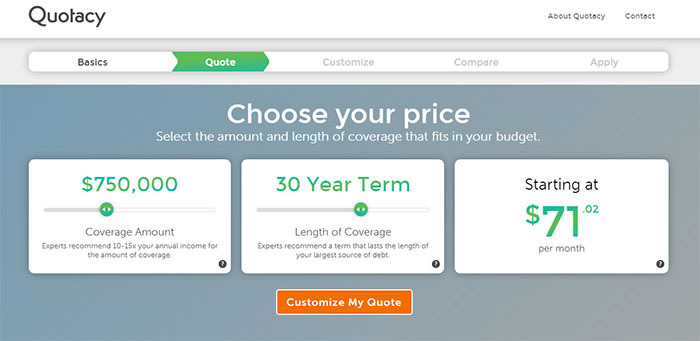
Option 2: $750,000 Life Insurance with a 20-Year Term
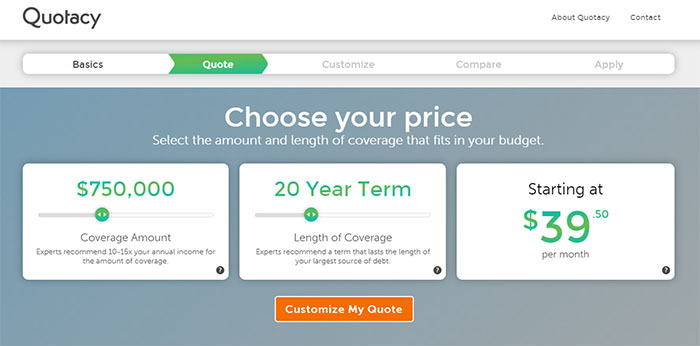
Option 3: $500,000 Life Insurance with a 30-Year Term
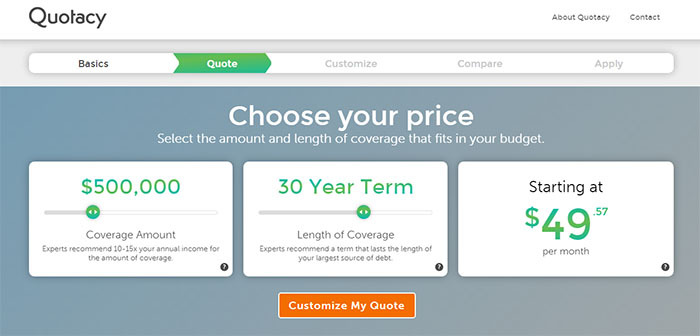
If you’re looking to lower your premium costs, which option do you choose? Lower the coverage amount or shorten the term? The right option really depends on your situation.
For example, if your mortgage loan is a 15-year term and your children are over the age of 10, then going with the 20-year term over a 30-year term is a logical choice. On the other side of the spectrum, if your children are still in diapers, then lowering the coverage amount and sticking with the 30-year term is probably the wiser choice.
Buy what you can afford. Some life insurance is better than no life insurance at all.
Will I qualify for affordable life insurance?
The success of your application and the amount you will pay in premiums depends on a number of factors. These include:
Age
Gender
Employment (if you are in a dangerous profession, such as working in construction, your premiums will be higher)
Personal and familial medical history (if you have survived a catastrophic illness, or have a family history of serious diseases, then you may pay more in premiums)
Current health
Smoking status
Driving status (a record of consistently unsafe driving will impact your premiums)
Hobbies (if you love cliff-diving or other risky hobbies, expect an elevated premium)
Frequent international travel—such as for work or volunteering that involves traveling to areas that are listed as potentially dangerous by the State Department—will likely make your premiums higher than average.
Don’t let the list above intimidate you. Insurance companies need this information to calculate an estimate of your mortality risk, but don’t hesitate to apply because you have a few strikes against you. Quotacy works with all types of applicants who may face challenges in finding affordable life insurance quotes.
» Compare: Term life insurance quotes




